Growing up, Lianes Punanang dreaded riding through the mountain pass to the west of her village because it was said to be haunted by malevolent spirits.
Today, a plaque designates the pass as the Shihmen Historic Battlefield (石門古戰場), where Japanese troops slaughtered indigenous Paiwan warriors on May 22, 1874 in retaliation for an 1871 incident, when Lianes’ ancestors killed 54 out of 66 shipwrecked sailors from Ryukyu who had accidentally wandered into their territory. Their actions triggered the 1874 Japanese punitive expedition, which alarmed the Qing Dynasty, who ended up suing for peace.
Dubbed the Mudan Incident (牡丹社事件), it was a pivotal moment in East Asian history, as the Qing started to proactively govern and defend Taiwan, while Japan annexed the Kingdom of Ryukyu, its first move in what would be decades of imperial expansion. For the next century, the Paiwan perspective was mostly left out of the historical record, which portrayed them as murderous savages who triggered an international event.
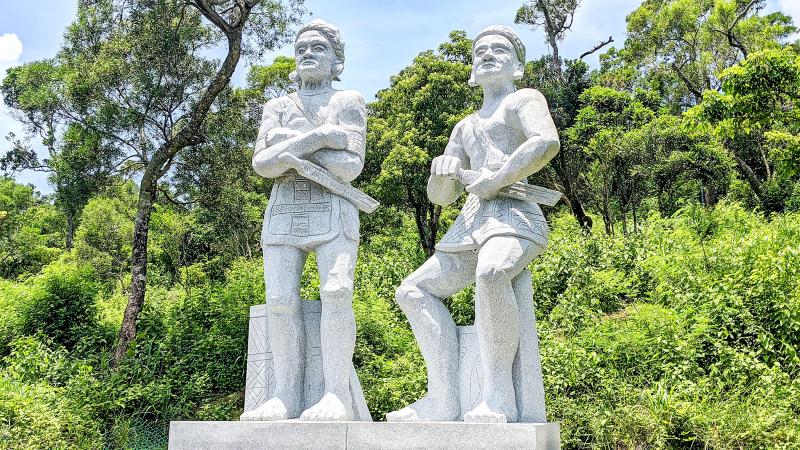
Photo : Han Cheung, Taipei Times
“As a child, I wondered, ‘Was that really my people?’” Liane recalls. “I just couldn’t understand why they would do such a thing. All I could do was protect myself by hiding the fact that I came from Mudan (Sinevaudjan) village.”
Lianes went on to study Taiwanese history at National Cheng Kung University, and has since become one of the main voices in an effort to reclaim the narrative and show that the Paiwan were not indiscriminate murderers.
The effort, which began in 2004, is gaining momentum as its 150th anniversary comes up, with an interactive museum near the village, a new path connecting the various historical sites and plenty of displays telling a more balanced version of the story. There’s also two ongoing exhibitions in Pingtung City. One of them, “Listening to Mudan: Formosa Incident of 1874” (聆聽牡丹的聲音), is an audiovisual display focused on the voices of the Paiwan indigenous community.
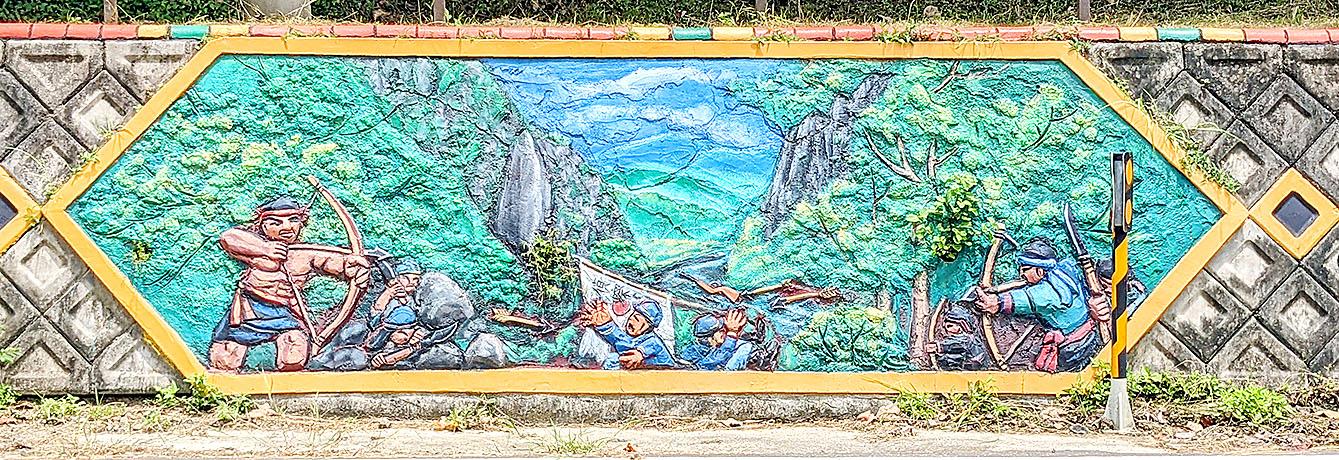
Photo : Han Cheung, Taipei Times
“When I was young, the elders forbade me from speaking to outsiders about the incident, as they said nobody would believe us,” says Paiwan elder Atinpon Gu, who narrates much of the material in the exhibition. “They said that when the time comes, the outside world will start to hear our point of view. It’s happening — it just took nearly 150 years.”
PAIWAN PERSPECTIVE
The first part of the “Listening to Mudan” exhibition is narrated in the Paiwan language by Atinpon and contains accounts of the incident by Atinpon and other researchers. As a child, the gregarious Atinpon enjoyed listening to elders tell stories, but noticed that his father becoming angry when telling of the great battle at the Shihmen pass.
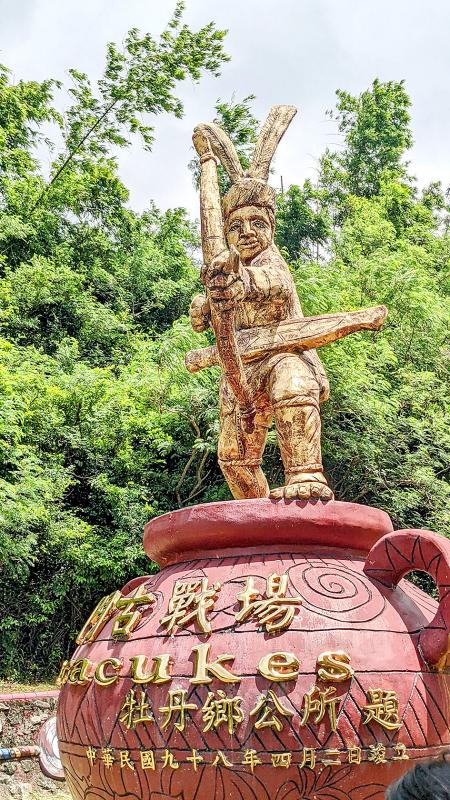
Photo : Han Cheung, Taipei Times
“He was mad because despite our ancestors sacrificing so much in the battle, the Han Taiwanese painted us as bloodthirsty savages. I couldn’t really understand it as a child, but his story mostly matched the versions I heard from other elders. So I slowly tried to understand why. We are a peaceful people, but when unknown people suddenly appear on our shores, we have to protect ourselves.”
Atinpon says that the tragedy was caused by cultural and linguistic barriers. The people of nearby Kuskus had observed the castaways for three days and, after deeming them harmless, approached them and tried to take them to their village for food and shelter. However, the Ryukyuans refused to go because the Han Taiwanese they first encountered told them that the Paiwan were vicious headhunters. A scuffle broke out and the Paiwan forcefully took the sailors to their village.
Fearing for their lives, the Ryukyuans fled in the middle of the night, taking shelter at a Han farmer’s house. This was against Paiwan etiquette, and since Kuskus was a relatively small settlement, 66 foreign men could be a serious danger to the community. The warriors gave chase, a fight broke out and bloodshed ensued.
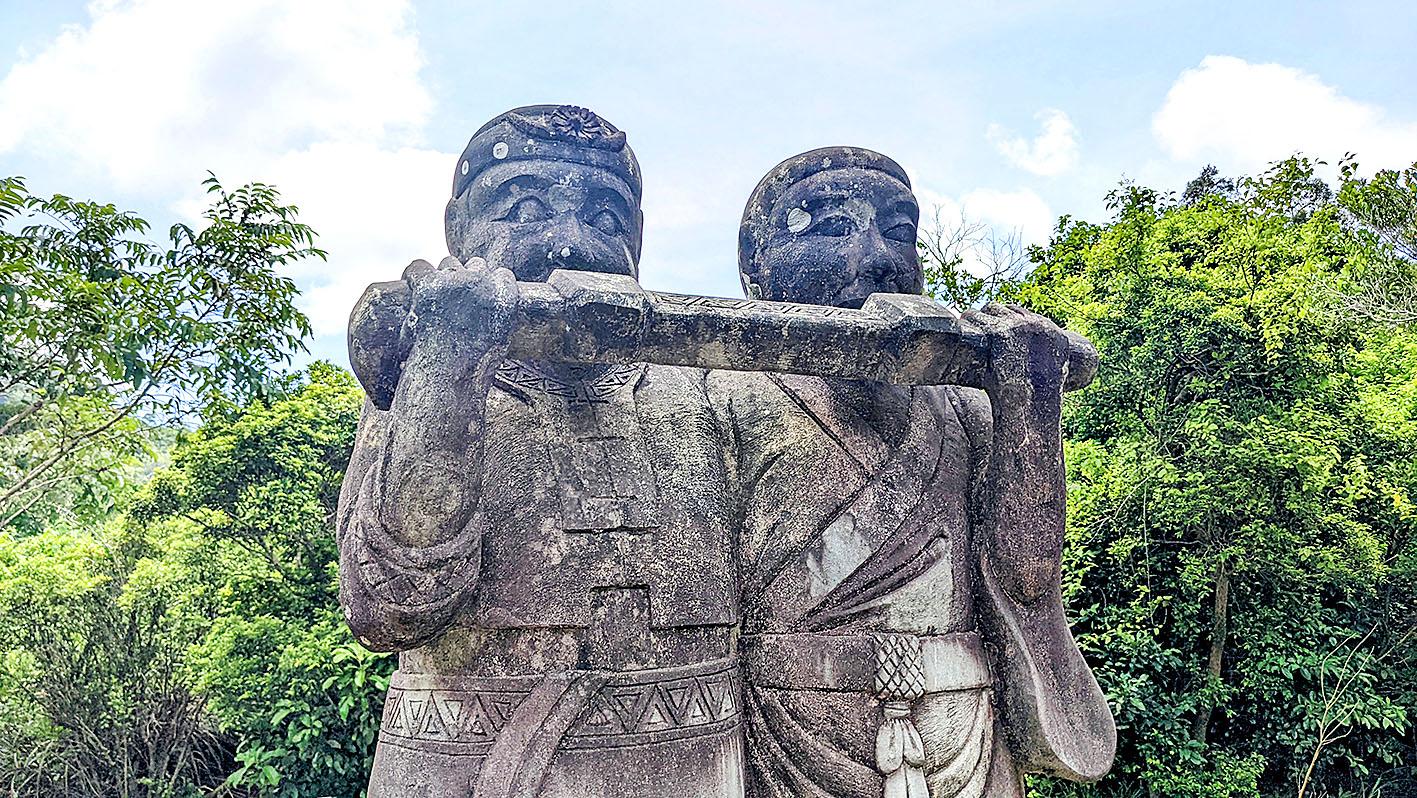
Photo : Han Cheung, Taipei Times
The 12 survivors fled and were taken in by Yang You-wang (楊友旺), who brought them to Tainan to be repatriated. Yang built a mass grave for the dead, which can still be seen today.
The Japanese used this incident as an excuse to invade Taiwan three years later. They traveled up the river from today’s Checheng (車城) area but the Paiwan were already prepared, likely hearing of the enemy arrival from nearby Hakka communities. A number of Paiwan villages participated in the fight, and the battle lasted for a over a month, with countless dead and several villages completely destroyed.
MUDAN STIGMATIZED
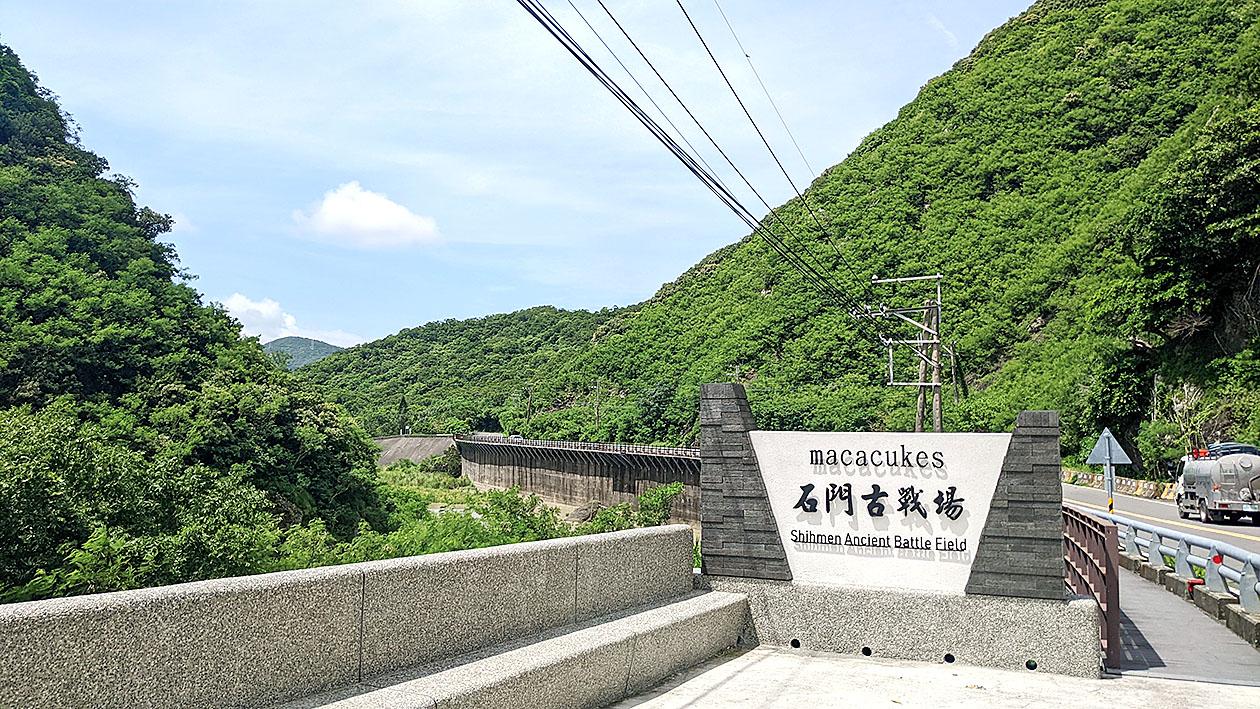
Photo : Han Cheung, Taipei Times
Those from the Paiwan community maintain that there was no victor in the incident. Atinpon says the Japanese were tired of fighting in unfamiliar terrain with deadly diseases, and they hoped to stop after proving that they could invade what was Qing territory and even get compensated for it. Furthermore, their “avenging” the sailors finally gave them a pretext to annex the Ryukyu Kingdom.
“Yes, the Qing started paying more attention to Taiwan, but that’s just on the official side,” Atinpon says. “None of the successive governments cared about our people, who were actually the central figures of this incident. If we didn’t resist the Japanese, it might not just have been us that were killed. We fought a battle against foreign invaders on behalf of the government, and we didn’t even get a plaque for it. Isn’t that absurd?”
Lianes says her ancestors shouldn’t be judged by contemporary moral standards.
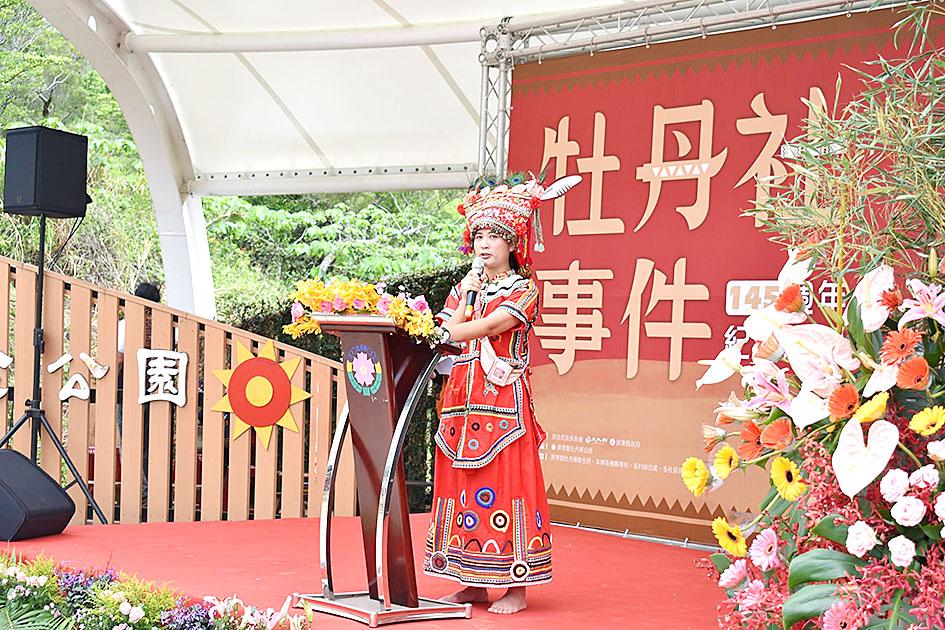
Photo courtesy of Mudan Township Office
“But people say that since we did the initial killings, we are completely in the wrong. Understanding how people thought then is important. The village was basically your country, and you would do anything to protect it. You followed the chief’s orders, and there was no time for personal sentiments.”
But in the ensuing decades, the Paiwan of Mudan became almost synonymous with headhunting.
“Up until recent decades, when young people told their parents they were heading to the south, their parents would often say, ‘Stay by the coast. Don’t go into the mountains because the Mudan people will kill you,’” Atinpon says.
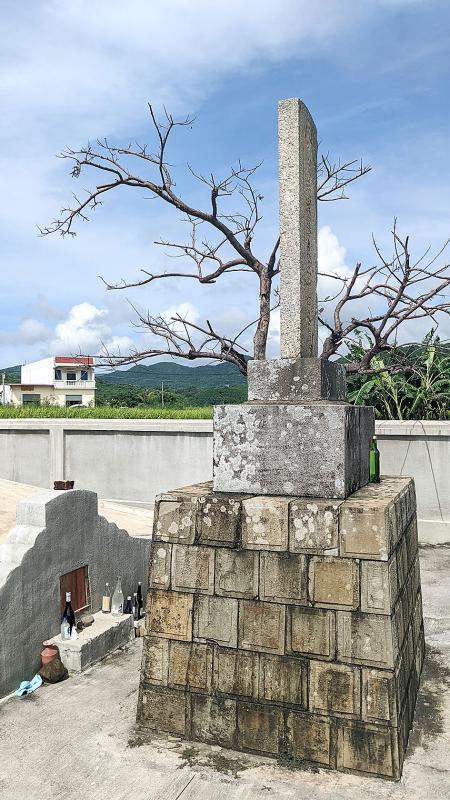
Photos : Han Cheung, Taipei Times
Even though Lianes’ uncle Valjeluk Mavalju was one of the first villagers to do research into the incident, it was rarely discussed at home. Despite the negative associations, Lianes chose it as her graduation thesis. The Mudan Township Office happened to be compiling a chronicle of local history at the time, so she went home to interview people about the incident. However, many of the details had been forgotten because people rarely talked about it out of fear of retribution.
Several Japanese commanders involved in the Mudan Incident would later serve as high-ranking officials in Taiwan. The village and family of Aruqu, one of the elders who were involved in the incident, was kept a secret so nobody would be singled out.
“Since our people inherit the names of their ancestors, anyone named Aruqu could be related,” Lianes says, adding that being given the name is an honor.
READY TO SPEAK
In November 2020, a statue of Aruqu and his unnamed son was erected on a hill overlooking the valley at Mudan Incident Memorial Park.
A statue of a Paiwan and Ryukuan drinking out of a connected “friendship cup” can also be seen on the park grounds. An identical statue sits on Miyako Island, where the sailors came from, symbolizing the reconciliation between the two sides.
The statues were created after a Paiwan delegation went to Miyako in 2005 to apologize for the killings.
“We felt like we had to apologize to them on behalf of our village to move forward,” Lianes says.
The Ryukyuans also visited Mudan, and were happy to discuss the history from a local, rather than Japanese, perspective.
Following an international symposium on the incident in 2004, schools began covering the event in detail and children put on theater performances and other activities on the anniversary of the Shihmen battle. Twenty years ago, visitors would be hard pressed to find a local who could explain the Mudan Incident. Today, Lianes says that most residents can more or less discuss the events and their impact.
“I think Mudan is ready to tell its own history... from our perspective,” Lianes says. “There’s been renewed attention to the Mudan Incident recently, as it is actually a very pivotal moment in Asian and Taiwanese history. As locals, we cannot stay silent anymore.”
Please check Tuesday’s paper for a travel story on historic sites related to the Mudan Incident and other sights to see along the way.

That US assistance was a model for Taiwan’s spectacular development success was early recognized by policymakers and analysts. In a report to the US Congress for the fiscal year 1962, former President John F. Kennedy noted Taiwan’s “rapid economic growth,” was “producing a substantial net gain in living.” Kennedy had a stake in Taiwan’s achievements and the US’ official development assistance (ODA) in general: In September 1961, his entreaty to make the 1960s a “decade of development,” and an accompanying proposal for dedicated legislation to this end, had been formalized by congressional passage of the Foreign Assistance Act. Two

March 31 to April 6 On May 13, 1950, National Taiwan University Hospital otolaryngologist Su You-peng (蘇友鵬) was summoned to the director’s office. He thought someone had complained about him practicing the violin at night, but when he entered the room, he knew something was terribly wrong. He saw several burly men who appeared to be government secret agents, and three other resident doctors: internist Hsu Chiang (許強), dermatologist Hu Pao-chen (胡寶珍) and ophthalmologist Hu Hsin-lin (胡鑫麟). They were handcuffed, herded onto two jeeps and taken to the Secrecy Bureau (保密局) for questioning. Su was still in his doctor’s robes at

Last week the Democratic Progressive Party (DPP) said that the budget cuts voted for by the China-aligned parties in the legislature, are intended to force the DPP to hike electricity rates. The public would then blame it for the rate hike. It’s fairly clear that the first part of that is correct. Slashing the budget of state-run Taiwan Power Co (Taipower, 台電) is a move intended to cause discontent with the DPP when electricity rates go up. Taipower’s debt, NT$422.9 billion (US$12.78 billion), is one of the numerous permanent crises created by the nation’s construction-industrial state and the developmentalist mentality it

Experts say that the devastating earthquake in Myanmar on Friday was likely the strongest to hit the country in decades, with disaster modeling suggesting thousands could be dead. Automatic assessments from the US Geological Survey (USGS) said the shallow 7.7-magnitude quake northwest of the central Myanmar city of Sagaing triggered a red alert for shaking-related fatalities and economic losses. “High casualties and extensive damage are probable and the disaster is likely widespread,” it said, locating the epicentre near the central Myanmar city of Mandalay, home to more than a million people. Myanmar’s ruling junta said on Saturday morning that the number killed had